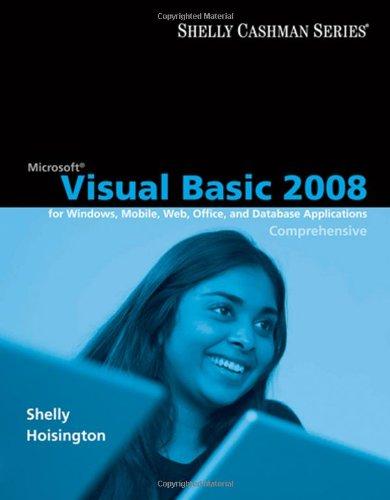CSCI 14-02 Assignment 4, 25 Points, Due 3/14/19 Using Loops For example people sign u thip, the S.S. Rusty T. Buckett, hires out for dinner party cruises A fund raising committee has agreed to pay you $30.00 per person provided that a minimum of 200 up for a moonlight dinner dance cruise. Anxious for business (and to pay your crew), you agree to 200er ticket for EACH additional group of 10 people showing up over the minimm of your price by 50 cents For example: 200 people 210 people 220 people 230 people Ticket Price is $30.00 Ticket Price is $29.50 Ticket Price is $29.00 Ticket Price is $28.50 Compute the ticket price and 100 to 500 (i.e. 100...200, 210, 220, 230, 240, 25.0,.., 4.0,500) or 50 to 230 or 320 to 470. Wherever the user wants to start and stop subject to the maximum carrying capacity profit for each group of passengers starting at N to user stopping point, for example The ship's maximum carrying capacity is 500 passengers. Your program should allow the following: 1. Ask the user to enter a minimum number of passengers (i.e. 1, 30, 50, 150, 255) up to the maximum 2. Ask the user to enter a maximum number of passengers. The Coast Guard has rated this dinner cruise ship at no more than 500 passengers excluding crew 3. Change ticket price (i.e. $20, $15.75, $10.50, $11.45, part of the negotiations?) 4. Ask the user to enter the fixed cost for the cruise (i.e. $2,000, $2,500, $3,550, etc.) 5. Ask the user to enter a discount per ticket per every group of 10 passengers G.c. 0.10,0.25, 0.50, etc.) Check that the Check that the maximum is not more than 500 passengers (same for the minimum) Determine the maximum PROFIT, the number of passengers needed to generate that profit, and the ticket price that will generate that profit. User can execute this any number of times. Logic should ask user if they wish to quit or continue. You will be using some sort of loop to repeat the application possibly multiple times. minimum number of passengers is not greater than the maximum passengers. 8. 9. Algorithms needed: NP is the Number of Passengers TP is the Proposed Ticket Price MP is the Minimum Number of Passengers discount is the amount off per every group of 10 Passengers above the minimum fixed cost is the cost of the cruise to the owner Cost of Ticket TP -((ONP - MP)/10) *discount) Profit- (NP Cost of Ticket)- fixedcost Since you are "incrementing by 10 passengers", you might want to use some sort of a loop. CSCI 14-02 Assignment 4, 25 Points, Due 3/14/19 Using Loops For example people sign u thip, the S.S. Rusty T. Buckett, hires out for dinner party cruises A fund raising committee has agreed to pay you $30.00 per person provided that a minimum of 200 up for a moonlight dinner dance cruise. Anxious for business (and to pay your crew), you agree to 200er ticket for EACH additional group of 10 people showing up over the minimm of your price by 50 cents For example: 200 people 210 people 220 people 230 people Ticket Price is $30.00 Ticket Price is $29.50 Ticket Price is $29.00 Ticket Price is $28.50 Compute the ticket price and 100 to 500 (i.e. 100...200, 210, 220, 230, 240, 25.0,.., 4.0,500) or 50 to 230 or 320 to 470. Wherever the user wants to start and stop subject to the maximum carrying capacity profit for each group of passengers starting at N to user stopping point, for example The ship's maximum carrying capacity is 500 passengers. Your program should allow the following: 1. Ask the user to enter a minimum number of passengers (i.e. 1, 30, 50, 150, 255) up to the maximum 2. Ask the user to enter a maximum number of passengers. The Coast Guard has rated this dinner cruise ship at no more than 500 passengers excluding crew 3. Change ticket price (i.e. $20, $15.75, $10.50, $11.45, part of the negotiations?) 4. Ask the user to enter the fixed cost for the cruise (i.e. $2,000, $2,500, $3,550, etc.) 5. Ask the user to enter a discount per ticket per every group of 10 passengers G.c. 0.10,0.25, 0.50, etc.) Check that the Check that the maximum is not more than 500 passengers (same for the minimum) Determine the maximum PROFIT, the number of passengers needed to generate that profit, and the ticket price that will generate that profit. User can execute this any number of times. Logic should ask user if they wish to quit or continue. You will be using some sort of loop to repeat the application possibly multiple times. minimum number of passengers is not greater than the maximum passengers. 8. 9. Algorithms needed: NP is the Number of Passengers TP is the Proposed Ticket Price MP is the Minimum Number of Passengers discount is the amount off per every group of 10 Passengers above the minimum fixed cost is the cost of the cruise to the owner Cost of Ticket TP -((ONP - MP)/10) *discount) Profit- (NP Cost of Ticket)- fixedcost Since you are "incrementing by 10 passengers", you might want to use some sort of a loop







